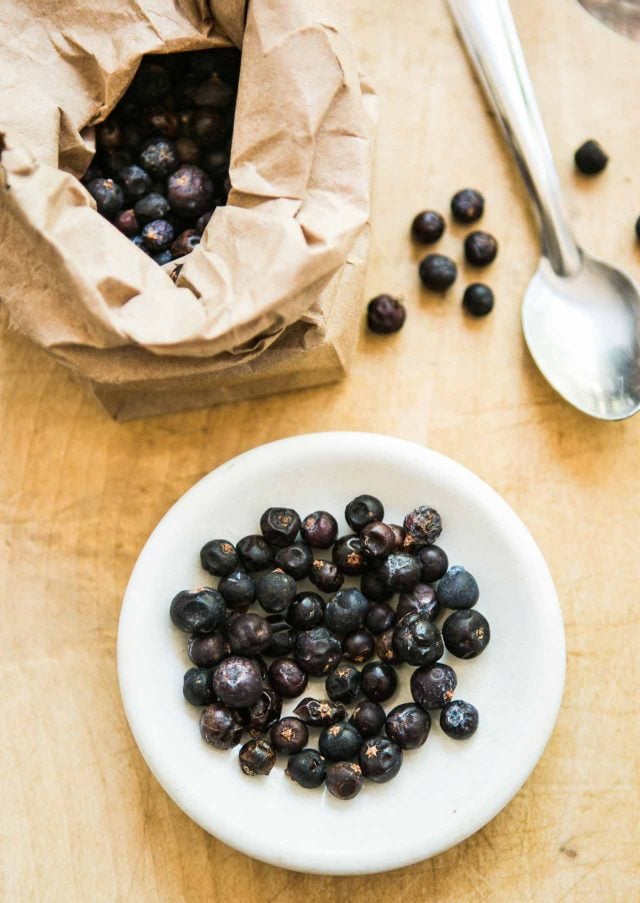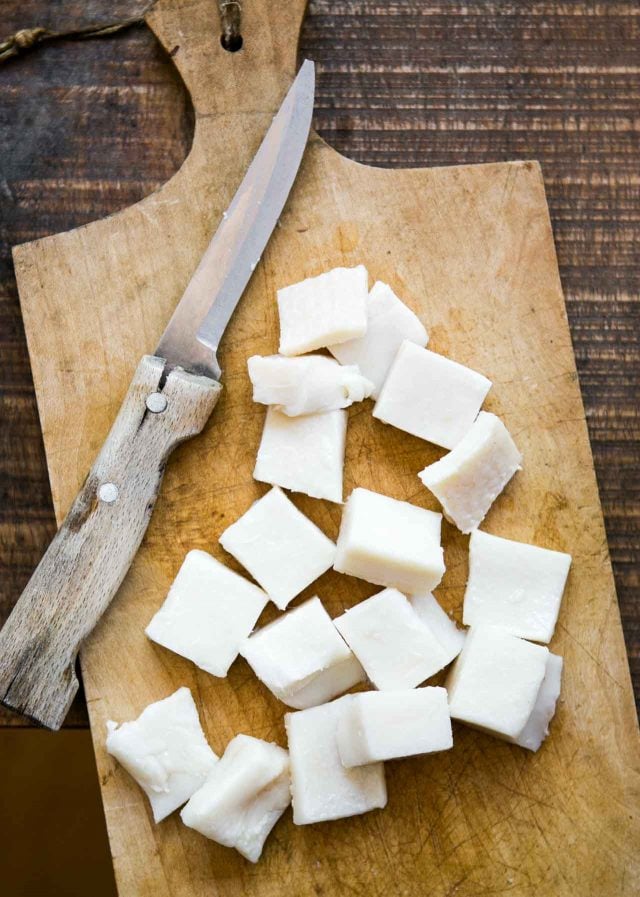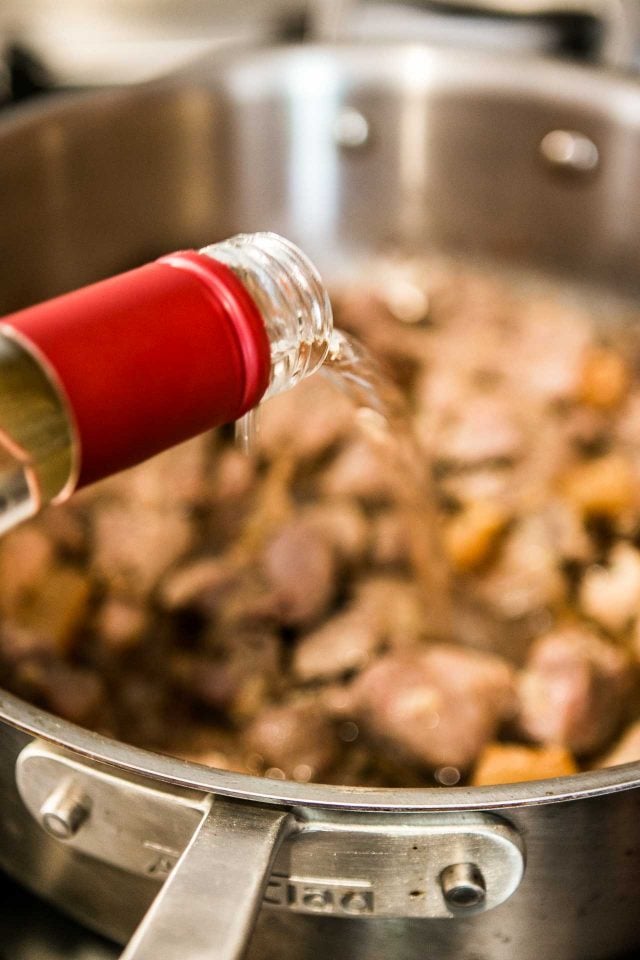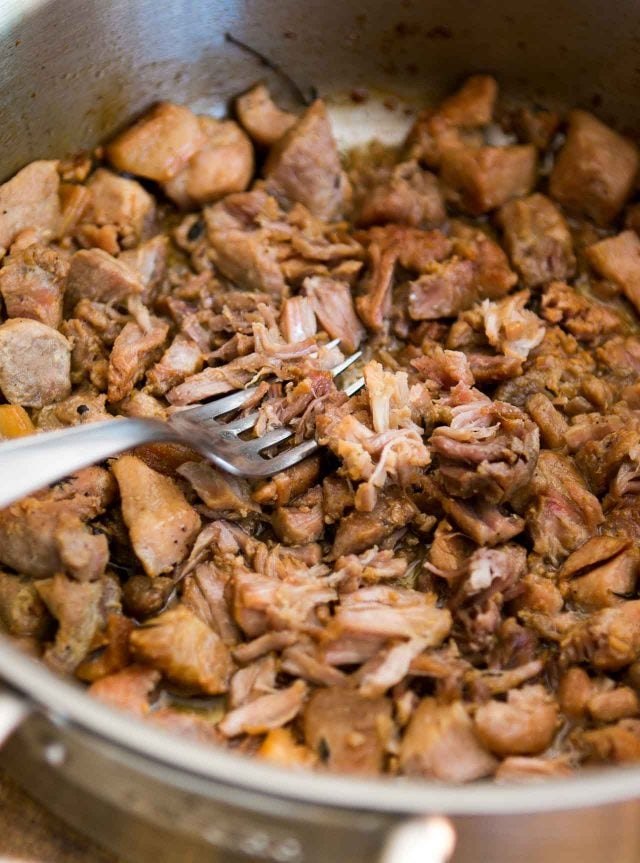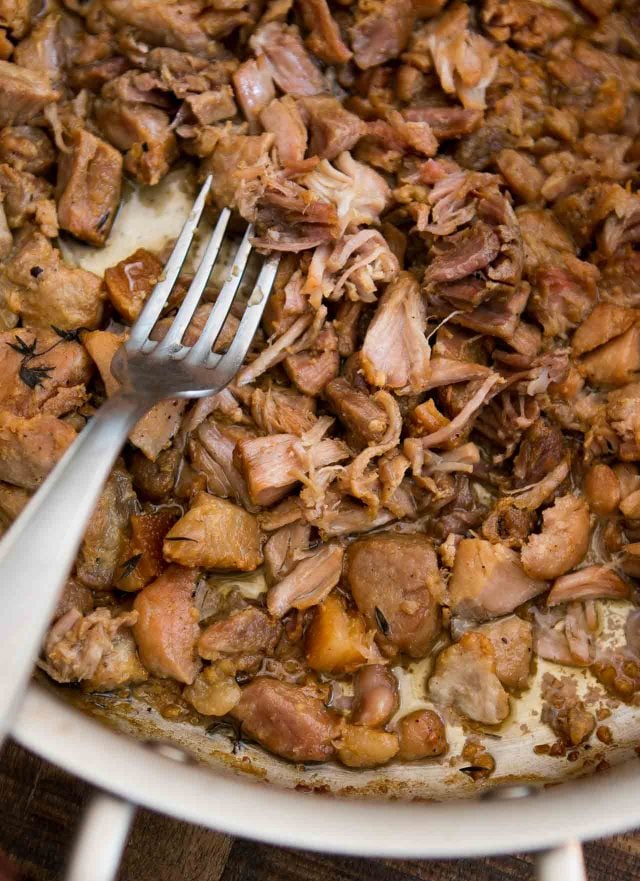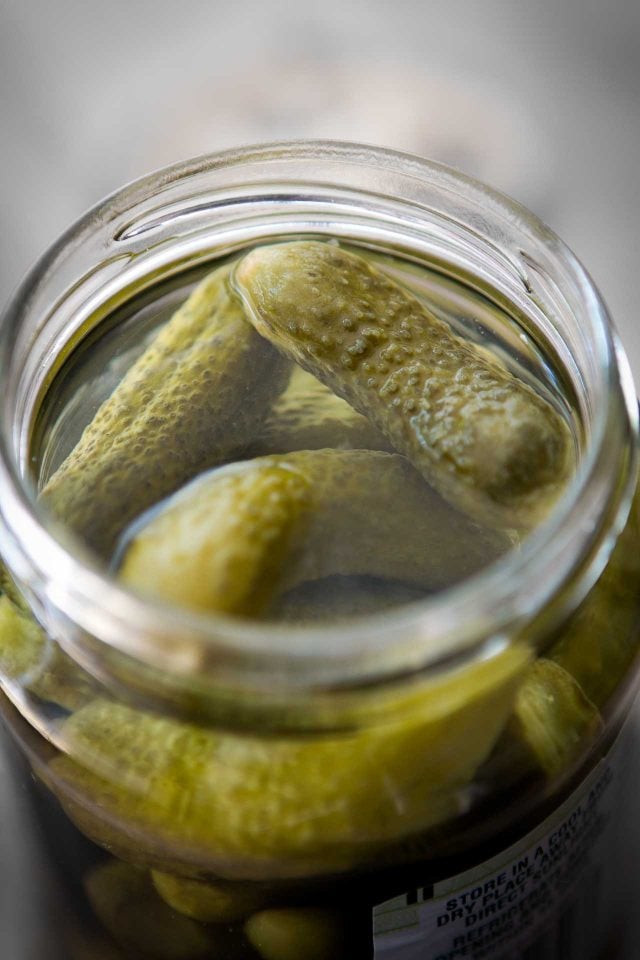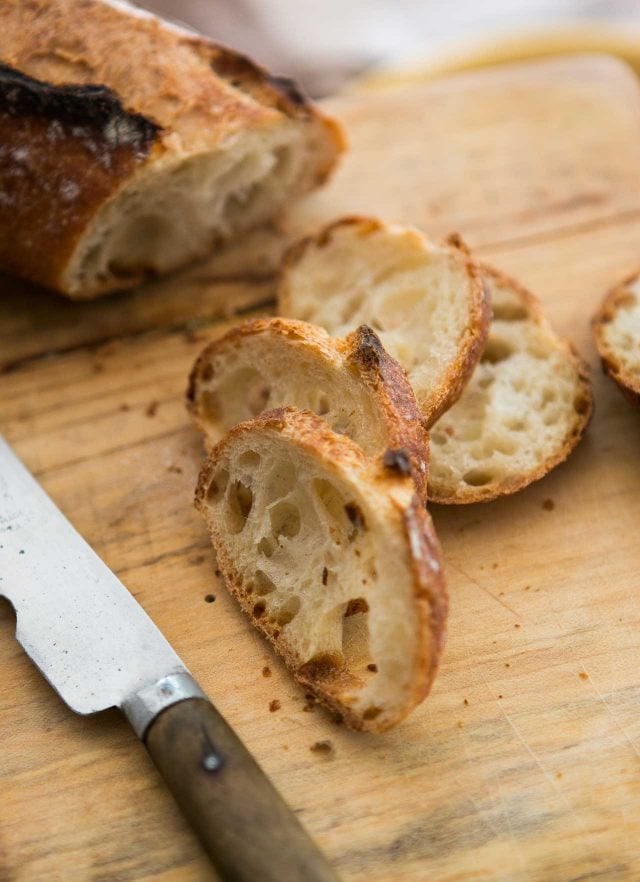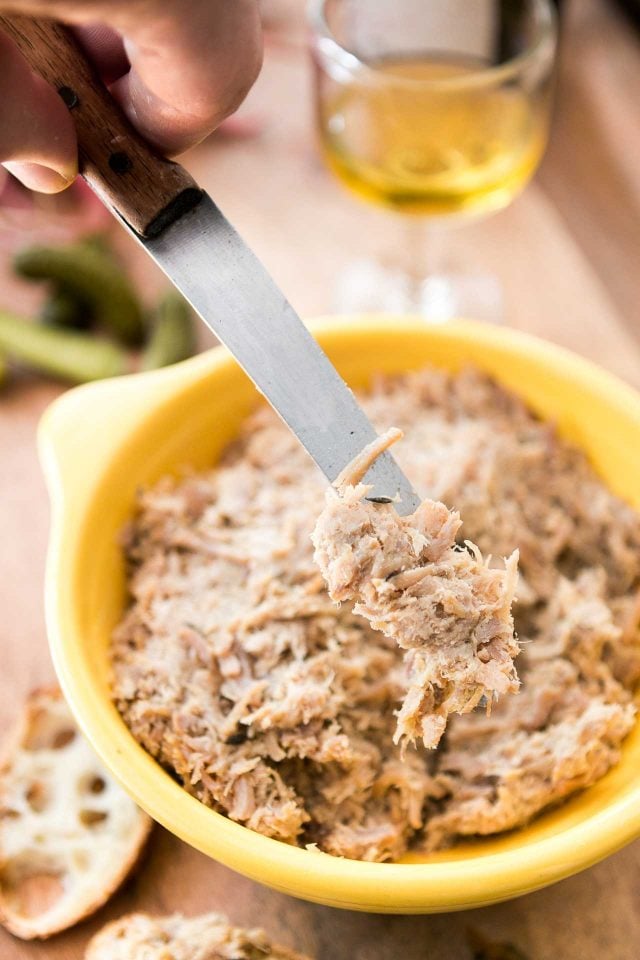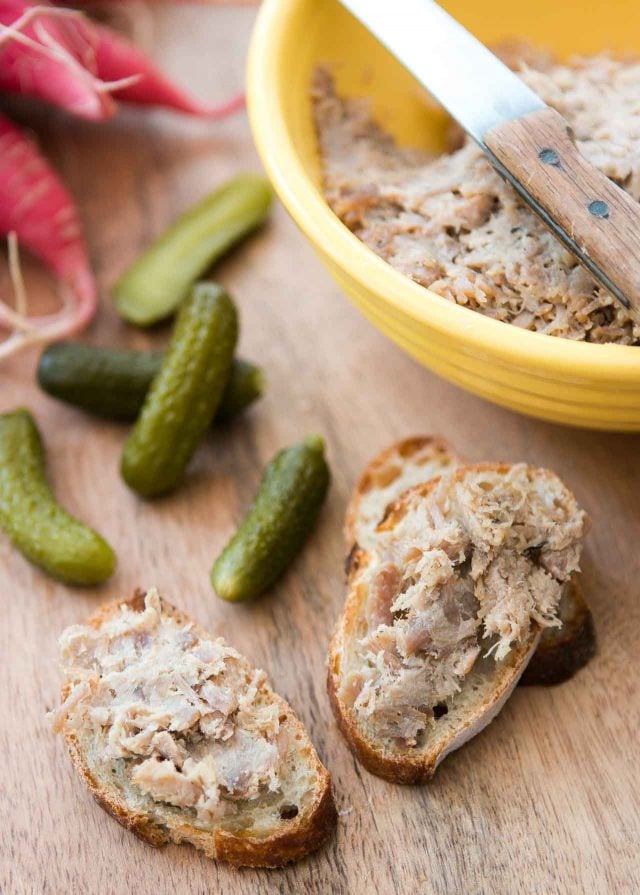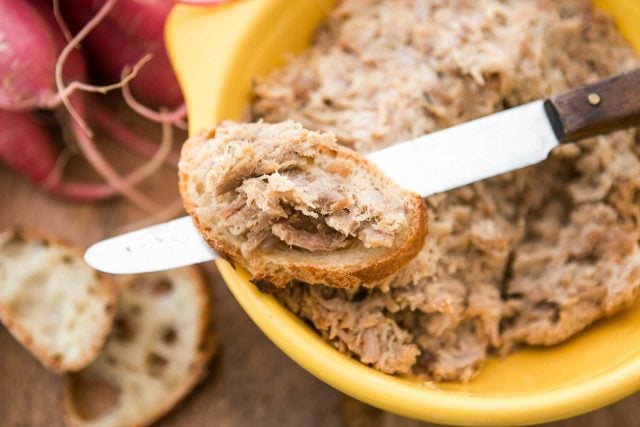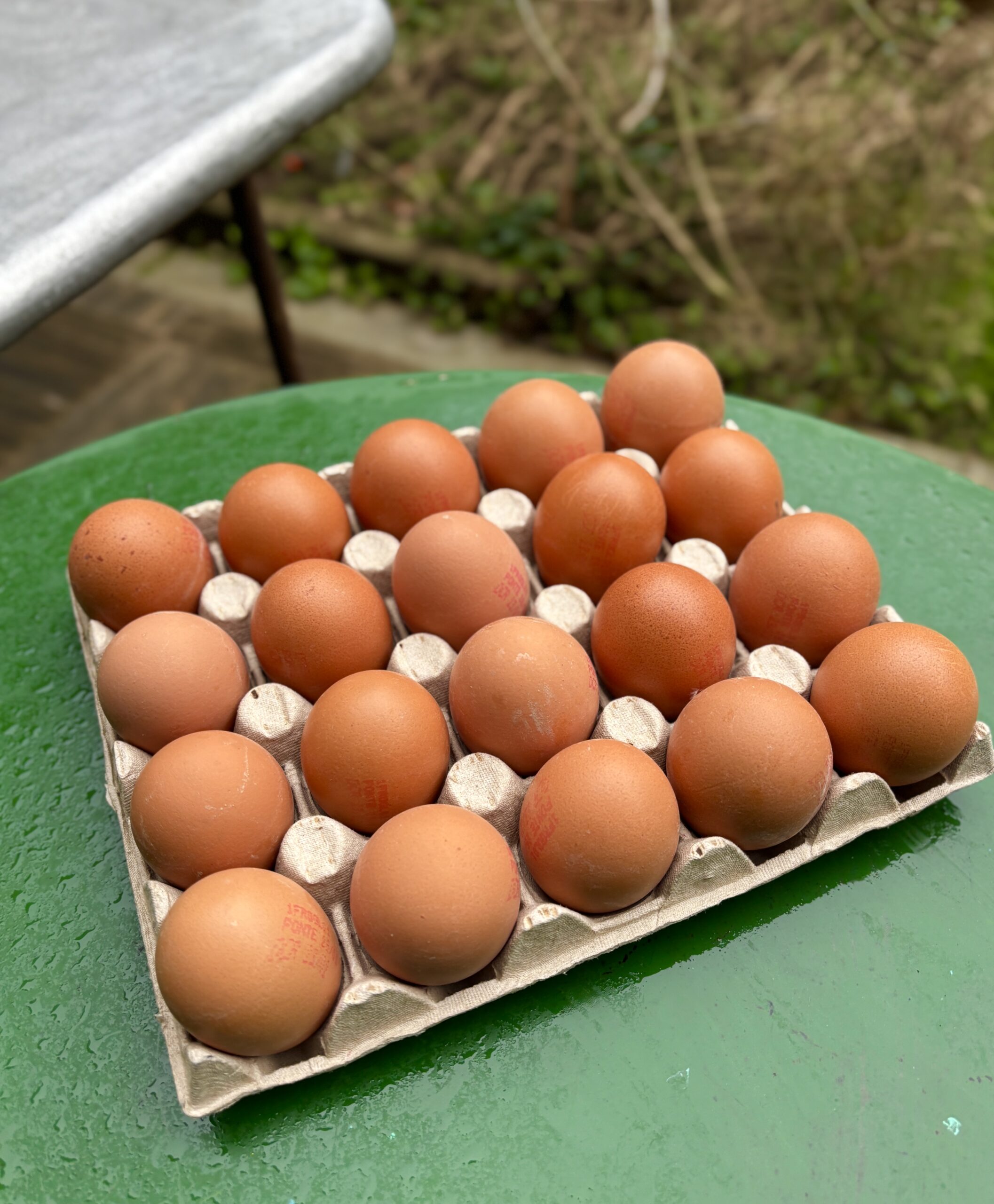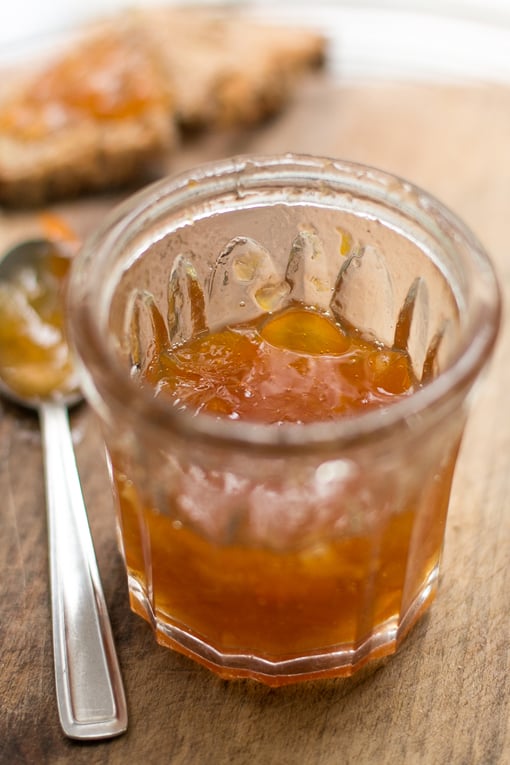Pork Rillettes
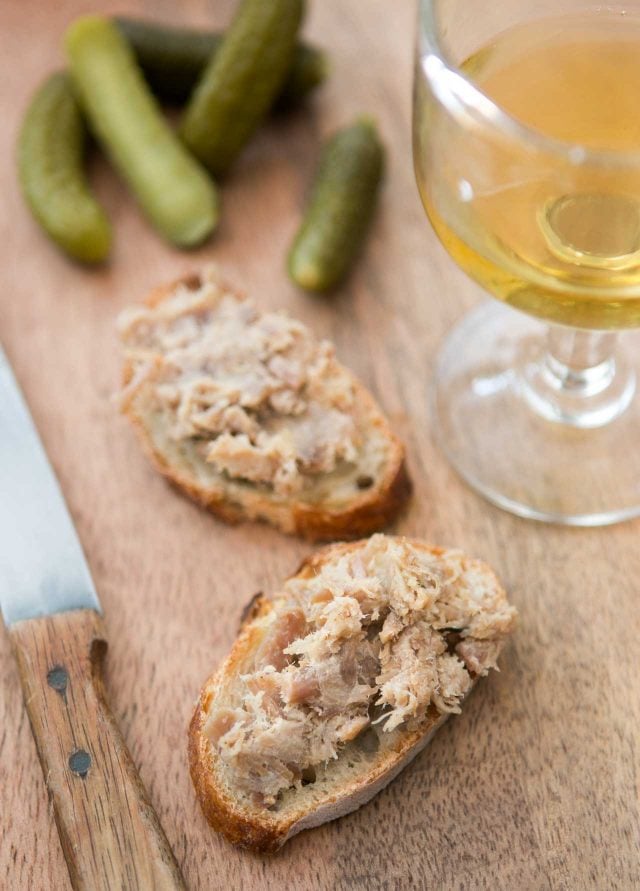
Rillettes is a funny word. It always sounds like a card game – “Care to play a few rounds of rillettes?” I never figured out how this spreadable cornerstone of the charcuterie world got its name, but I’m sure some etymologists out there might have some insight to share?
In the meantime, I’ve been enjoying being back in the kitchen. After sweating over my next book, a memoir with recipes, I’m excited (and so are my eyes) to step away from the computer, after scanning pages and paragraphs, checking French verb tenses, and verifying timelines of events, to get all the details right. Thankfully there are just a few more passes (lookovers) and now I have more time to spend back into the kitchen.
I can also get cracking on the lovely stack of recent cookbooks that came out this year. One that I was particularly interested in was La Vie Rustic: Cooking and Living in the French Style, the newest book from Georgeanne Brennan. Georgeanne has written a number of cookbooks during the last few decades on French cuisine. I’ve cooked from many of them over the years and always enjoyed her more rustic (or rustique?) take on French food.
Georgeanne lives most of the year in San Francisco but has French roots. Her husband is French, as is her son-in-law. And her daughter helped style My Paris Kitchen. So it’s like we’re one big happy family, with deep roots in both cultures and countries.
Speaking of family, traveling recently in the U.S., I engaged in one of my favorite activities: Prowling around the markets, butcher shops, and supermarkets, to see what’s available, and what might be the U.S.-equivalent to French products, so I know more about them when I write up recipes.
Meat tends to be especially vexing because the cuts of meat in France don’t necessarily correspond to those in the States. Perplexed visitors who dine out in France often are confused by onglet, palette, and sot l’y laisse, the “oyster” on poultry, known as “the part the idiot leaves behind,” in French. (Which admittedly is less confusing than calling a poultry part an oyster.)
Tackling this recipe, I had to figure out the French equivalent of fatback, which Georgeanne calls for in the book, for making the rillettes. I asked my friend Kate Hill, who teaches charcuterie-making in Gascony, and she told me that fatback is the firmest fat in the animal. I tried that the first time I made this and it barely gave up any of its fat when I cooked it. So I tried it again with the slightly softer fat from the pig jowl or belly, which a local butcher hooked me up with.
So you might need to go to a butcher and ask for belly fat, rather than soft fat, which is lard in English, not to be confused with French lard, which is what we would call bacon in the States. Sorry to be so confusing, but at least you get a glimpse of what it’s like to translate all this stuff between two cultures! (And which makes writing about it all a little overwhelming at times.) But at least you know that if you go to France and order a chicken or pork with lard, it’ll come with bacon, not slathered in pork fat.
Which reminds me of the time way back in the 1990’s when, on a visit to Paris, I ordered cassoulette, which turned out to be a big, heaping bowl of steaming tripe that the waiter presented to me, rather than the cassoulet I thought I was ordering. The upside is that I’ll never make that mistake again.
Both Kate and Georgeanne (and I) agree that making rillettes requires a little bit of intuition and making adjustments based on ingredients. Artisanally raised pork will throw off a different amount of liquid (water and/or fat) than its industrially raised counterpart, and I found myself wrist deep in pork trying to figure it out.
My conclusion is that it’s best to just follow the base recipe that I give, draining off most of the fat, then adding back what you need. The result is a meaty spread that’s great on a baguette along with some cornichons, or smeared on a baguette for a hardy sandwich.
Pork Rillettes
- 1/4 cup (60ml) brandy or whiskey
- 8 cloves garlic, minced
- 1 1/2 teaspoon kosher or sea salt
- 1/2 teaspoon freshly ground black pepper
- 3 juniper berries, well-crushed
- 10 allspice berries, well-crushed
- 1 pound boneless pork shoulder or butt, cut into 1/2-inch (2cm) pieces
- 10 sprigs fresh thyme, optional
- 5 ounces (155g) fresh pork belly, cut into 1-inch (3cm) cubes
- 1/4 cup dry white wine
- Mix together the brandy or whiskey with the garlic, salt, pepper, juniper, and allspice berries with the pork cubes in a bowl. Cover and refrigerate overnight.
- In a large saucepan (that has a lid) or a medium-sized casserole, heat the pork belly pieces with 1/3 cup (80ml) water over low heat. Cook gently for 15 minutes, stirring occasionally, encouraging the pork pieces to give up their fat. If the water evaporates, add a little more to help the fat render.
- Preheat the oven to 250ºF (120ºC).
- Add the macerated pork and any liquid to the pan along with the thyme. Cook, stirring frequently, for another 15 minutes, until the pieces of pork are cooked on the outside. Cover the pan and put it in the oven.
- Lift the lid after 1 1/2 hours of cooking. Press on the chunks of fat with a fork to release more of their fat and encourage them to break down. Add the wine, replace the lid, and bake the pork for another 1 to 2 hours, until the pork is very soft.
- Remove the pork from the oven. Pick out the thyme branches and discard. (The original recipe said at this point to drain the pork through a sieve, over a bowl, to collect the juices, but mine didn't have enough to warrant that. If yours does, see headnote for more information on that.) Press on any visible chunks of fat to get the fat out of them, then remove them from the pan and discard them.
- Pour most of the fat out of the pan into a small bowl and reserve. Scrape the meat chunks, and any pan fat, juices and brown bits, into the bowl of a stand mixer. The spices should all be very soft and dissolved, so it's not a problem to include them.
- Mix the meat on low-to-medium speed with the paddle attachment until well-mashed. (You can also make this by hand, mashing the meat with a fork.) The mixture should resemble dry tuna salad. Add enough of the reserved liquefied fat to make it juicy and moist. I ended up adding about 3 tablespoons, but it'll probably need between 2 and 4 tablespoons. The more fat you add, the richer and creamier it'll be.
Notes
Related Recipes
Homemade Cornichons (Papilles & Pupilles, in French)
Monique’s Cornichons (Susan Loomis on Epicurious)
